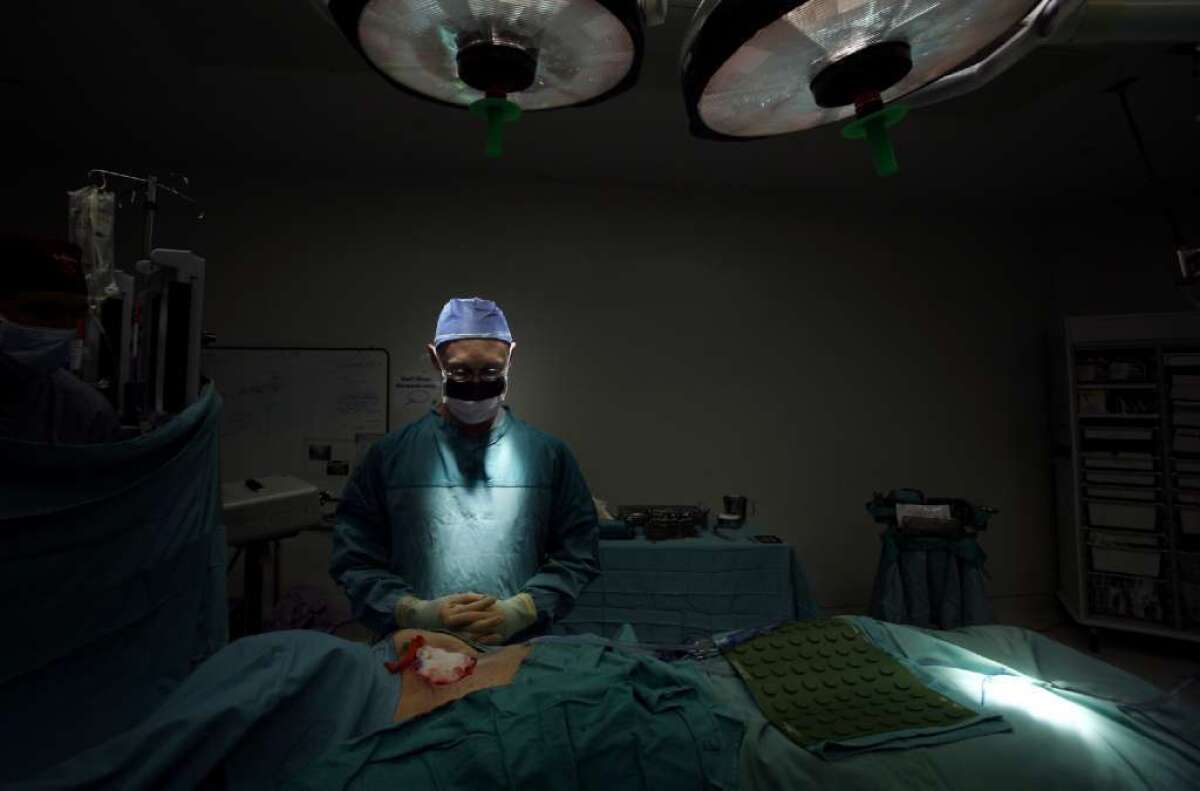Doctors stumped as more breast cancer patients remove healthy breasts

Evidence is mounting that too many women with early-stage breast cancer are opting for mastectomies instead of having breast-conserving surgeries that offer the same odds of survival.
A new analysis of more than 1.2 million breast cancer patients in the U.S. found that 37.8% of women who were eligible for breast-conserving surgery wound up getting mastectomies in 2011, the most recent year for which data were available. That’s up from 34.3% in 1998 — an increase large enough to be statistically significant, according to a report published Wednesday in JAMA Surgery.
Among the women who had mastectomies during the 14-year study period, 45% had total mastectomies, 34.7% had modified radical mastectomies and 0.8% had radical mastectomies. But most of the overall increase in mastectomies could be traced to the 19.5% who opted for bilateral mastectomies. In 1998, these procedures accounted for only 5.4% of all mastectomies; by 2011, that figure had risen to 29.7%.
In a bilateral mastectomy, surgeons remove not only the breast with an early-stage tumor but the tumor-free breast as well. This option, also called contralateral prophylactic mastectomy, or CPM, has become increasingly popular in recent years, and doctors are struggling to understand why.
Long-term tracking of breast cancer patients has shown that women diagnosed with early-stage tumors fare just as well with the more limited breast-conserving surgery as they do with mastectomies. For instance, a study of California breast cancer patients published this year in JAMA found that the 10-year survival rate for women who had breast-conserving surgery (83.2%) was essentially the same as for women who chose CPM (81.2%) and slightly better than for women who had a single mastectomy (79.9%).
But most women don’t seem to realize that they can save their breasts without putting their health at risk, experts say. In the California study, the proportion of California women who picked CPM grew from 2% in 1998 to 12.3% in 2011, despite the favorable performance of breast-conserving surgery.
Doctors from Memorial Sloan-Kettering Cancer Center and several Harvard-affiliated schools and hospitals developed a lengthy survey to understand the motivations of younger women (between the ages of 26 and 40) who decided to treat their early-stage breast cancers by removing both breasts. The survey revealed that 98% of the women felt it was “extremely important” or “very important” to eliminate the risk of developing a future cancer in their healthy breast; 95% felt the procedure would give them peace of mind; and 94% thought it would improve their odds for a a cure, according to a 2013 report in Annals of Internal Medicine.
The authors of the new report, from Vanderbilt University in Nashville, say the reasons for CPM’s growing appeal “remain unclear,” but their data offer some hints. Among the 1.2 million women in their study, those who had any kind of mastectomy instead of breast-conserving surgery were more likely to have tumors that were larger or more invasive (though all of the cancers were at an early stage). The women were also more likely to be young, to have other health problems, to live in places where people had less education, and to be from the South.
Although there is no ideal mastectomy rate for early-stage breast cancers, the 2011 rate of 38.1% may be too high, the authors warn. The National Accreditation Program for Breast Centers from the American College of Surgeons recommends that no more than 50% of patients with early-stage breast cancer have mastectomies, while the recommended cap in Europe is only 30%.
“Current U.S. rates probably would not meet the European benchmark,” the researchers wrote.
The study was based on cases reported to the National Cancer Data Base, a joint project of the American Cancer Society and the American College of Surgeons Commission on Cancer. About 70% of newly diagnosed cancers are reported to the database.
For more news about cancer research, follow me on Twitter @LATkarenkaplan and “like” Los Angeles Times Science & Health on Facebook.







